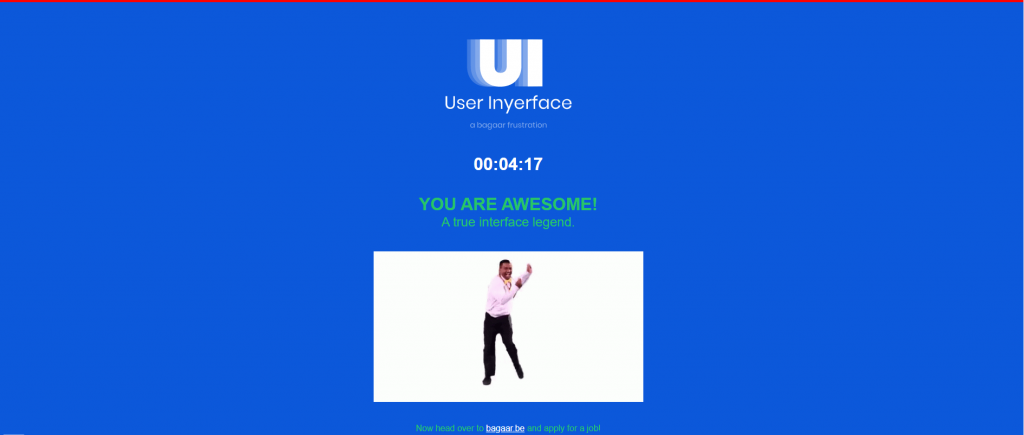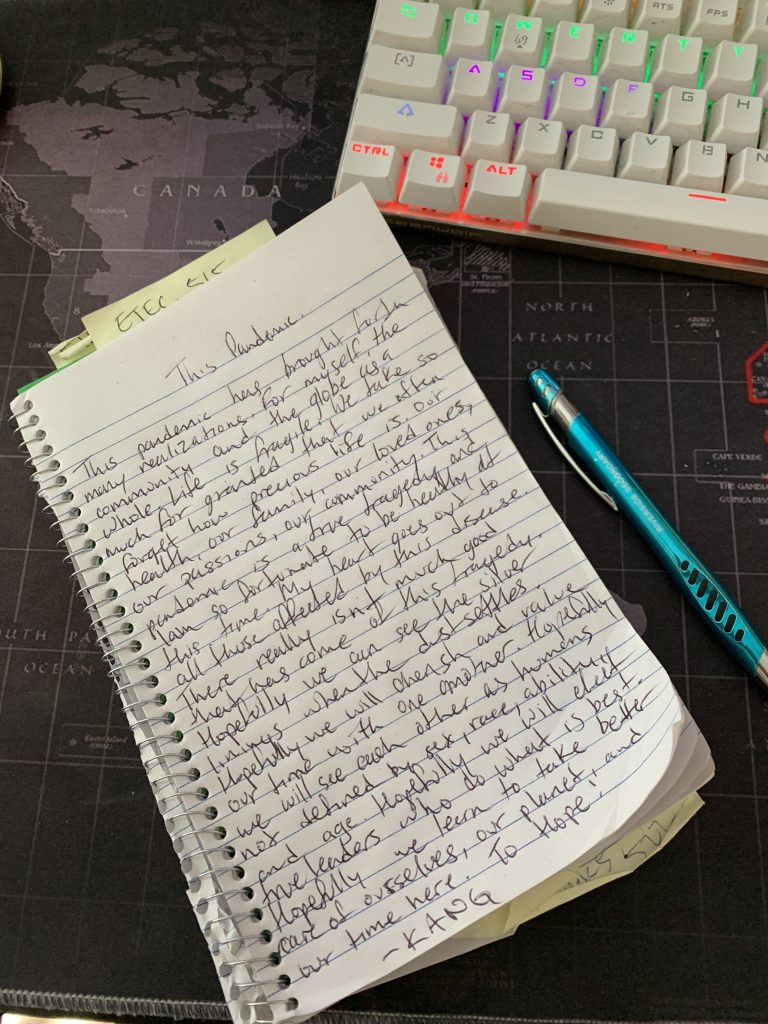Reading and sharing thoughts with my peers was a great experience and ETEC 540 offered me a creative output for all the theory and knowledge I have gain over the course of my MET program. There were many great posts, stories, and ideas and the following is a list to highlight some of the ones I connected most with.
Link 1: Brian L. – What’s in your bag?
The first connection I had was with Brian and his task 1: What’s in your bag? Brian – as with almost everyone else – chose to use UBC blogs as a means of showcasing their weekly tasks and final projects. What immediately caught my attention to Brian’s task was all his cycling gear. As someone who is also into cycling and more recently, mountain biking, I was intrigued by his bag’s content and the significance they carry in his daily life. His blog site is quite simple and well organized. These are two qualities that I very much appreciate in any blog site. The navigation should be simple and clear. Furthermore, the chronological order of his blog posts allowed me to scroll effortlessly through his site. His views towards literacies and text technologies are similar to mine but he leans more towards the digital aspects of text. As do I, however I still appreciate and utilize the old-school print technologies as mentioned in my first task. Overall, Brian’s simple blog style layout and organization was pleasing to the eyes.
Link 2: Katlyn Paslawski – Emoji Story
Immediately upon visiting Katlyn’s website I noticed the attention to visuals and graphics. Katlyn uses large graphics, big pictures, and simple layout colours. This made the navigation of her website pleasant and appealing. Also, she included an short introduction bio to herself which was uncommon but very welcomed! This allowed me to grasp a better understanding as to who Katlyn is. In comparison, I am now reflecting on my own blog and worry that I come across as an unknown blogger to many. Tasks such as #1 What’s in my Bag? offer a glimpse into me as a person but I feel as though a short introduction would have helped the readers a lot more. Overall, Katlyn did a fantastic job with her blog which made it very easy to read through the entire site!
Link 3: Sarah Wong – Manual Script
Sarah is a former classmate in other MET courses. I knew what to expect in terms of her work ethic and attention to detail. I was not surprised when I saw her blog space. It is elegant and modern. Her task – Manual Script showcases a perfect example of her attention to detail. If you look at her handwriting you will see that it is immaculate. In comparison to my own, my handwriting is very messy and scribbled while hers appears to be a computer font. The processes behind the manual script are also note-worthy. As mentioned, my handwriting is very messy, flowy, and scribbled. I utilize handwriting to outlet my thoughts in an unorganized brainstorm. In contrast, Sarah mentions how she thinks before she writes – quite the opposite. I wouldn’t disagree with her process. Neither is correct or incorrect, they are simply two different ways to create script. To each their own!
Link 4: Emma Pindera – Golden Record
First off, Emma’s website represents what I would imagine a blog from the 1800’s to look like. The use of black and white colours, traditional serif fonts, and a cursive style writing showcased a unique approach to Emma’s blog page. The website seems to be one long endless scroll. This endless scroll added to the historic effect of the blog space. However, the lack of navigation buttons did create some obstacles when trying to move between old and new posts. In Emma’s Golden Record task, there are some notable similarities between our tasks. We both appreciate the diversity and multicultural aspect of the Golden Record. This is a key component that Emma and I both agreed upon. Overall, Emma’s website created an enjoyable reading experience back in time.
Link 5: Jeevan Pannun – Speculative Futures
Jeevan’s blog resembled that of a ‘off the shelf’ template from UBC blogs. This was accentuated by the ‘sample page’ still present on his homepage. Not that this is a problem but perhaps prevented Jeevan from adding a personalized touch to his blog space. Nonetheless, his blog posts were full bodied and did a great job of showcasing Jeevan’s thought-provoking creativity. In particular, his speculative future task caught my attention because of the fact that I am a high school teacher and Jeevan offered two very plausible perspectives of two teenagers. My take of the speculative futures showcased two narratives that were far-fetched yet not too far away. In comparison, Jeevan’s narratives were present and realistic. This offered a narrative that was not so much speculative, but rather, insightful into the thoughts of a teenager. I appreciated this point of view and change in perspective.
Link 6: Tyler Senini – Speculative Futures
Tyler’s blog site clearly showed his interest in the great outdoors. I would assume Tyler is from Alberta based on his background photos of farms and the Rockies. These two beautiful landscapes offer a peaceful reading experience. However, I do wish the font was a little more visible and clear on the background. When comparing to my own blog site, I focused on big, bold, and contrasting colours in order to catch the readers attention. Whereas Tyler focused on appealing landscapes to capture the same effect. Or perhaps he did this to simply satisfy his needs to explore the outdoors. Regardless, one can appreciate Tyler’s love for the simpler things in life. For example, the landscapes of Canada. Or – based on his speculative futures – the use of normal language as opposed to short text acronyms like LOL and SMH. I agree with his point of view. As a society, we find it 2 difficult 2 typ prply and spell words prply lol,… This could potentially lead to the loss of the beautiful landscape and complexities of the English language. neways, ttyl.


